Avoid a Logjam of Patients When the Economy Fully Reopens
By John A. Hovanesian, MD
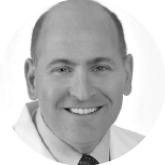
Like most ophthalmic practices, Harvard Eye Associates ceased all elective surgery in mid-March, reserving the OR for urgent or emergent cases only—mostly retinal detachments but also some critical glaucoma procedures. Since then, we returned to performing elective surgery in early May at a deliberately slowed schedule to allow time for extra steps to sanitize patient areas. The current situation will not (we all hope) last forever. At some point, we will return to something resembling normal practice, and there are things we can do now to make that return less traumatic for us and for our patients than it might otherwise be.
I’d like to share some of the tactics we have instituted that are helping us to keep in touch with our patients and to pave the way for what we hope will be a smooth transition back to a new abnormal.
patients are reluctant
Multiple news reports have indicated that the number of ER visits for non-COVID disease has dropped dramatically during this global health crisis.1 Heart attacks don’t stop, but ailing patients are staying away for fear of contracting the coronavirus at the hospital or the primary caregiver’s office.
Similarly, ophthalmologic disease doesn’t stop. One of the worries I have is that some of our patients may be having problems at home that they’re not reporting to us because of reluctance to come in for a visit.
To counteract this, we actively reached out to all patients who had an appointment with us within the past few months or who had one scheduled in the near future. Via our software system, MDbackline (MDbackline), we sent a short questionnaire asking them to click one of three choices: (1) they are fine and do not require any immediate care, (2) they are having a problem that they do not think is urgent, or (3) they are having a problem that they do think is urgent.
When patients respond with numbers 2 or 3, MDbackline automatically alerts our staff to the category they fall in. Our team then schedules a telemedicine or live visit accordingly. We also created a TV ad with this message that we are running as part of our regular advertising (bit.ly/hovanesian0620).
DRIVE-THRU IOP
Some patients with chronic conditions require ongoing monitoring, even during a crisis. We have a large population of patients who undergo regular IOP checks, some of which should not be delayed. Like other practices, we have instituted a drive-thru IOP-check clinic (Figure 1) that helps to ensure that we won’t end up with hundreds of people who need appointments for IOP checks when the practice opens. This clinic ran for 3 weeks during the peak of the crisis. When we reopened the practice in early May, a much smaller number of patients needed urgent care for glaucoma follow-up.
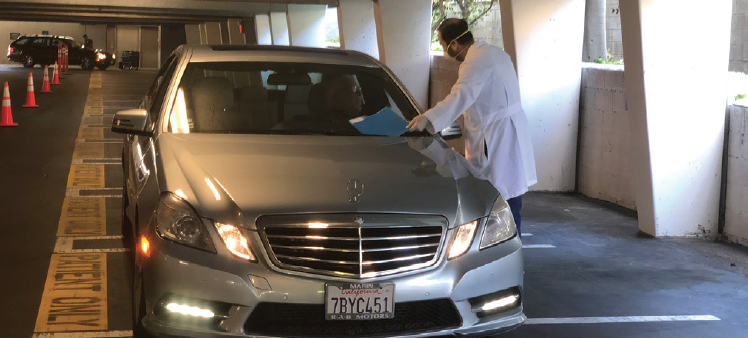
Figure 1. Savak Teymoorian, MD, talks to a patient at Harvard Eye Associates’ drive-through IOP check clinic.
Courtesy of John A. Hovanesian, MD
The drive-up clinic works like a production line. The patient drives up to the first station, where his or her identity is verified. The staff member puts a clipboard with the patient’s information on the hood of the car. Then, the patient drives to the next station where a handheld tonometer is used to check IOP. At the next station, the doctor looks at a printout of the patient’s chart and decides whether the patient is good to go. If a high pressure or other problem is detected or suspected, the patient is referred for an office visit for more comprehensive care.
We can bill the patient’s insurance for a regular eye visit to the drive-through IOP clinic because the short eye visit codes don’t require a slit-lamp examination. (Those codes don’t even require an IOP check, but we obviously need to do that for these glaucoma patients.)
TELE-CONSULTATIONS
Another strategy to ease the burden of care when practices return to a normal schedule is reaching out proactively to patients who may soon be candidates for cataract surgery. There is a lot we can do in the way of patient education for this population even though our offices are closed or on a reduced schedule.
We target any patients who are older than 50 years and who have expressed visual complaints. A questionnaire module on MDbackline queries them on what vision issues they’re having, what type of vision they might desire after cataract surgery, and their lifestyle needs and wants. We call the information generated by this questionnaire a visual profile report (VPR). With that VPR information, we then set up a telemedicine cataract consultation in which a doctor can educate the patient on his or her options. We can put the patient on the schedule for surgery and for the office visit for slit-lamp examination, biometry, tomography, and OCT. If we decide upon examination that the patient doesn’t need cataract surgery, we can always take him or her off the schedule.
Week by week, people are getting more tired of waiting. We are directing these patients toward telemedicine because we don’t want to put them or ourselves at risk, but eventually we will see them in the office.
This telemedicine mechanism has allowed us to continue our cataract practice to a degree. It’s become an effective way to keep in touch with patients and to feel out how they might feel about a premium lens. So far in our telemedicine consults, we’ve seen that many patients are still interested in premium options.
Scheduling patients for surgery now will also help us when we reopen fully to be as busy as we can, as quickly as we can. The hope is that we can work through the backlog of demand, create new demand, and restore some lost revenue to our practice.
CONCLUSION
Our approach has been to think about everything from the patient’s perspective. How do we best serve the patient? How do we think outside of our normal exam room setting and expand our ways of interacting during this crisis? How do we use technology like MDbackline to streamline communication with the patient? And as we emerge from it, can we do more for patients with less? We’re hopeful that we’ll rise out of this as a better profession, a better industry, and a better practice.
1. Feuer W. Doctors worry the coronavirus is keeping patients away from US hospitals as ER visits drop: ‘Heart attacks don’t stop.’ CNBC. April 14, 2020. https://www.cnbc.com/2020/04/14/doctors-worry-the-coronavirus-is-keeping-patients-away-from-us-hospitals-as-er-visits-drop-heart-attacks-dont-stop.html. Accessed April 30, 2020.
Before the Deluge
By Mark Kontos, MD

Going from 100 mph to 0 mph and back to 100 mph is a maneuver a race car driver does routinely. But it’s not something that ophthalmologists generally do. Today, however, we are all in the midst of something like that in our practices.
At the time of this writing, we are emerging from a period of about 2 months during which essentially no anterior segment surgery has been performed in this country. This has never happened before. And it’s just now that the ramifications are beginning to play out. What is the best course of action for us to take? That is not an easy question to answer.
We have been scrambling to find ways to stay solvent by applying for grants, loans, and any other means possible to inject cash into our practices. We are just beginning to bring staff back and finding ways to accommodate the large number of patients who have been waiting for care.
Some individuals are worried that there won’t be a backlog of patients needing our services. But before the COVID-19 pandemic, approximately 300,000 cataract surgeries were done each month in the United States, so we should see a substantial number of patients needing our care in the near future. Also, as we are all well aware, when a person is having difficulty with vision, it is not something he or she is willing to put off into the future.
How do we manage this challenge in the midst of a smoldering pandemic? Let’s talk about three aspects of this situation: first, the clinic environment; then the surgical space, and finally the financial challenges.
IN THE CLINIC
It’s in the clinical space that most of our changes from past practices are likely to take place. By the time you read this article, many of you will already have initiated essential changes needed to provide care in the presence of COVID-19. The overriding principle of these changes is to provide as safe an environment as possible to deliver care—safe for the patient and safe for the staff.
In order to do this, we must evaluate the physical space of our clinics and determine what changes can be made to make it a cleaner and less virus-friendly environment. Spacing of furniture, plexiglass barriers at the reception desk, and air purification systems are ways to start. Examination rooms and testing areas must have all clutter removed. Installation of slit-lamp shields and regimented cleaning of surfaces in between each patient will be necessary. Masks for all who enter the clinic space, and gloves and eye protection for certain staff members, will be expected norms.
The clinical examination. We also need to create a new paradigm for the clinical examination. This requires a shift in two elements of the examination: (1) how patients travel through the clinic visit and (2) how many patients can be seen at any given time.
Traveling through the clinic visit. Limiting the patient’s contact with ancillary staff is now a priority. Whatever aspects of the clinic visit can be done without contact (eg, completing forms and insurance information) should be done by the patient in advance of the appointment. Similarly, some parts of the examination, such as recording the chief complaint and history, could be done via telephone or a software intake program from vendors such as Phreesia or MDbackline.
Reducing the time patients spend in the clinic is the main goal. Ideally, patients would be called into the office from their cars, go straight to testing and examination, have subsequent care planned, and then exit.
Seeing patients. How practices choose to integrate telemedicine into the clinical process will vary, but one thing is certain: The use of telemedicine in ophthalmology is likely here to stay in some form in order to limit the number of patients seen at a given time. Most likely it can be used to manage simple issues and answer patient questions, but, because reasonable reimbursement for these visits is now possible, we will see further expansion.
Assessing advantages and disadvantages. Our challenge will be to incorporate all these changes and find as much efficiency in the process as we can. The goal will be to boost patient visits per day as high as possible without degrading the patient experience in the process. There are positive and negative factors in play here. On the upside, patients will likely have little or no wait time in the clinic. On the downside, there is no doubt that patient-doctor interaction will be reduced to some degree. Somewhere in the middle is the balance we should strive for.
PPE Packs
One way to reassure patients and provide the safest outcomes.
By Eric D. Donnenfeld, MD
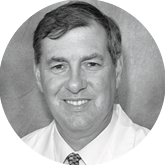
As we emerge from sheltering in place and go back to our ophthalmic practices, we have new concerns for our patients, staff, family, loved ones, and ourselves. In addition to providing excellent care to our patients—as we have always done—we must now enhance our safety procedures and help our patients and staff overcome the fear of leaving their homes, where they have been safely ensconced for 2 months, to venture into a medical environment. This is particularly important for the elderly population, which most ophthalmologists serve, who may have other comorbid risk factors for COVID-19. Many of our examinations occur 1 foot away from the respiratory track, so minimizing pathogen exposure and maximizing safety are paramount.
We will be challenged to implement social distancing in our practices, which will require changes to the office check-in procedure, utilization of the waiting room, and sterilization of all patient contact surfaces between each encounter.
Personal protective equipment (PPE) is the most visibly reassuring and effective way to ensure the safest outcomes. Guidelines for the use of PPE are being established by the AAO, ASCRS, Outpatient Ophthalmic Surgery Society, American College of Surgeons, and government agencies. There is universal agreement that doctors, staff, and patients must wear surgical masks to dramatically improve safety for everyone involved. The expectation is that we should all be wearing masks essentially the entire time we are in our office setting. Anyone who comes into contact with patients should also be wearing gloves whenever possible—not only in the OR but also in the office.
EXCEED PATIENTS’ EXPECTATIONS
Exceeding expectations and creating an atmosphere of security may mean, for some practices, having patients and staff also wearing full PPE (ie, mask, gloves, gown, and hair and shoe covers). We look to our industry partners to create customized PPE packs designed to meet our specific needs in the OR and office settings.
Robust use of PPE will be the new normal to protect everyone involved in patient care. Acting responsibly to protect our patients is demanded by the Hippocratic Oath, and it will allow us to follow our passion for improving vision and quality of life for our patients.
IN SURGERY
Up to this point, I’ve said little about state regulations or restrictions. But when we talk about getting back into the OR, these can’t be ignored. The timing and relaxing of restrictions on elective surgery has been a haphazard process, to say the least, with levels of complexity varying by state. Before you begin performing surgery, it is imperative that you be clear on your state board of health’s requirements for resuming surgery and that you follow them completely.
It is likely that we all now have a large group of patients eager to have their surgical eye issues resolved. The question is: How easy will it be to actually get them into the OR? This could vary by surgical setting.
Surgeons without access to an ophthalmic ambulatory surgery center (ASC) or in-office surgery suite. Those in this setting will likely be vying for OR time with delayed surgeries for gallbladders and hernias. It may be difficult to get extra OR time in this scenario.
Additionally, many hospital and private ASCs will require presurgical testing for COVID-19 and will deny surgery to high-risk patients during the early phase of our return to practice. This all creates challenges to managing the backlog we are likely to have.
Surgeons with easy access to or ownership of an ASC. Even these surgeons will be faced with challenges. Surgical gowns and masks, particularly N95 masks, are in short supply, and it will be easy to run through the current supply. Also, patient distancing in the pre- and postoperative areas will limit the number of cases we can perform in a given amount of time. (Editor’s note: For more on ASCs and COVID-19, see Ophthalmic ASC Reopening Checklist.)
Adding days to the surgical schedule will help, but it will take us time to catch up. On the bright side, if any specialty can find ways to get more surgery done in a shorter amount of time, it’s ophthalmology!
FINANCIAL ISSUES
Finally, let’s talk a little bit about money—or, more specifically, the lack of it. March, April, and May have traditionally been some of the busiest months of the year for our practice. This year, these months will be a complete wash, and there is simply no way we can make that up. On top of that, all of the things I discussed earlier are going to result in some amount of revenue reduction or expense increase in comparison with previous norms.
Further, it’s hard to anticipate the effect this pandemic will have on the refractive surgery market. Certainly, if the economy is slow to recover, the possibility of diminished interest is very real. The same can be said of the premium IOL market; however, some of my colleagues believe that we will likely experience a bump in the number of patients electing premium technologies. (Editor’s note: For more on this, see “Premium IOLs in the Post-COVID Era,” pg 46, and “Finding Opportunity After Crisis,” pg 58.) The bottom line is that we must take a hard look at our revenue forecasts for the rest of this year; we have done that and revised it downward—a lot.
Over the past couple of months, all of us have been through a lot. We have survived events none of us could have foreseen or had any way to prepare for, bruised but still standing. We are more fortunate than many. The skills we have are in great demand and highly valued by our patients—and not just a few of them. A great many, in fact a flood of them, are out there just waiting for us.
Communication, Reassurance Are Keys to Returning Patients to Your Practice
By Lisa M. Nijm, MD, JD

After more than 2 months of sheltering in place in Illinois, I am eager to get back to routine practice, whatever that may look like. (And with any luck, by the time you’re reading this I am back to practice.)
During the shutdown, I have been taking measures to help me and my staff return to practice as smoothly and swiftly as possible. To me, the most important provision in this reopening plan is to have strong communication with patients and staff, so that we can inform and reassure them of the comprehensive safety measures we have put in place. My top priorities as the medical director of my practice are to preemptively identify patient concerns about in-office visits post-COVID, disseminate clear and concise messaging that reflects the precautions we have taken, and ensure safeguards are in place to prepare us for any possible resurgence of coronavirus.
Remaining hopeful and positive is key. It’s also important to repeat your messaging, especially for those patients whose age or comorbidities may place them in a higher-risk category. Marketing experts usually suggest a mailing be repeated a minimum of three times to have traction; I see this messaging no differently. Also, it is helpful to use various channels of communication including emails, social media posts, and website updates. Even updating your on-hold phone messaging can improve the patient experience and allow you to share a reassuring, hopeful, positive message with patients.
Take opportunity across all of these channels to explain the extra housekeeping measures you have put in place, such as wiping down high-touch areas, spacing out chairs in the waiting room, purchasing medical-grade hyper-HEPA filters, and installing plexiglass barriers at the reception desk. Knowing that these steps are being taken will provide patients with the confidence needed to make appointments and be seen in the office.
As others have mentioned in this article, making changes to the clinic flow by limiting the amount of time each patient spends in the office is now crucial. Standard and hybrid telemedicine visits are an important part of the equation. Explaining to patients how telemedicine works is therefore also a big part of our current and future messaging. (Editor’s note: For more on telemedicine, see the article on pg 48.) Learning about our telemedicine initiatives has seemed to alleviate the concerns of many of my patients.
One last point: To get the most from a telemedicine consult, it is critical to take a thorough patient history. Asking patients the right questions through the telemedicine screen will help to elicit their symptoms. And if there’s any doubt about a patient’s condition, then it makes it easy to bring that patient in.
We must not forget that this is a trying time, both emotionally and financially, for many people. Showing compassion and empathy—and an understanding that surgical fees may be too much for patients right now—goes a long way to convey to them that you and your practice value them as individuals. Payment plans can help spread the cost out over time, so that the financial burden doesn’t keep patients from coming in for their appointments or their cataract surgery.
I do not expect patients to stay away for too long. Those who are less symptomatic or have an early cataract might take longer to rebook, but I have found that patients whose vision is affected have, at least initially, shown great interest in rescheduling their appointments quickly. I anticipate that we will see an initial rush of patients who have been waiting (eagerly) for their surgery. After that, there may be another dip in volume, or it could gradually return to normal levels over the next 6 to 12 months. This will be determined by whether we continue to see a decline in new cases of the virus or if there is a second wave of outbreak.
Working now to establish appropriate messaging, and disseminating that messaging through several channels including emails, social media posts, and updates to website and phone messaging, will help to assure patients that mechanisms are in place to keep them as safe as possible. It is incumbent on us to get that message across often so that patients do not delay getting the care that they need, which as we all know can lead to worsened conditions or the loss of vision.
Inventing the Pandemic Basic Playbook: Assessing Patients, Cleaning the Office, and More
By P. Dee G. Stephenson, MD, FACS
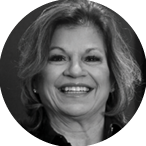
I am a busy solo cataract and refractive surgeon in a boutique practice located in Venice, Florida. We are small but mighty. I have the pleasure of working with six of the most incredible people whom I consider to be more than just my work family. Each of them adds value to what I do. They are a team I could not do without!
We have been fortunate in that we have continued to work through this unprecedented time, all being paid and adapting to new temporary roles within the practice. My office is in a 1926 Italian Renaissance historic home, and because of the design of the house we each have our own workspace. At first—as everyone did after being shut down and shut in—we walked around our practice with uncertainty and disbelief. I suffered from real anxiety, and I realized that what I was feeling was like a form of depression. I’m sure I was not alone in this. The uncertainty of how I was going to keep my practice alive and my employees paid wore heavily on my psyche.
CLEANING HOUSE
What amazes me is that, once we all put our heads together, and with the leadership of my office administrator/surgical counselor, we fell into our new roles fairly easily. Housekeeping—including purging charts and our personal spaces and getting things in order to shred and recycle—was cathartic. We ordered personal protective gear, air purification systems, and cleaning and sanitizing supplies. We made signs, removed magazines, cleared all counters, and placed protective shields on the desktops of all front office staff who could potentially come into contact with patients (Figure 2).
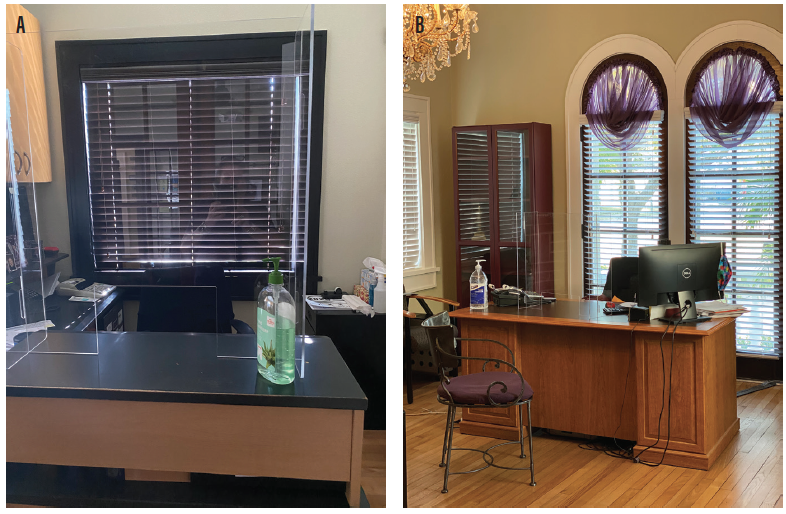
Figure 2. A protective shield was installed on the desktops of staff members who deal with patients (A and B). Note the bottles of hand sanitizer.
Figures 2 and 3 courtesy of P. Dee G. Stephenson, MD, FACS
We spent time getting equipment ready to use and figured out how we were going to observe social distancing. We removed area rugs and did all the things we needed to do to make us and our patients feel and be safe.
We realized that, when the office reopened, it was going to be like starting a new job; nothing would be routine. My staff and I were going to have to think about what we touched, what the patient touched, and how we were going to adapt to our new normal.
We wanted to have our patients feel safe and unafraid. Many of our older patients have been sheltering in place, and getting back out into the community to see the doctor might not feel safe to them. Thinking about surgery might make them even more hesitant. So being strong, steady, and safe is where we had to start. We needed to let our patients know that we are looking out for them.
BRINGING PATIENTS BACK
Having proper policies and procedures in place is a must for restarting, as is the use of telemedicine. And true organization is needed. We must start with our employees and make sure we are all on the same page so we can reassure our patients that they are safe in our office.
We decided on some basic things for everyone’s protection. We wear scrubs so that each day we can just put the scrubs in the wash when we arrive home, thereby protecting our families. We have a door guard who measures temperatures as patients enter and asks a few simple questions: How is the patient? How has he or she been feeling? Any recent travel history?
Patients are asked to wear masks, and we sanitize their hands upon entering. We open the door with gloves when they enter and leave and then clean off all handles and surfaces. Only one patient is allowed in the office every 30 minutes. Family members or caregivers are asked to wait in the car, and we call them on their cell phones when the patient is ready to leave.
Sometimes there may be more than one patient in the office. When that happens, the last to arrive is asked to sit in the chair farthest from the other patient who is waiting, and all chairs are sprayed with disinfectant when patients get up (Figure 3). We have set up cleaning protocols for each exam room, and there are signs outside each room to tell us whether it is clean or needs to be cleaned. This is extremely helpful on a busy day. Each of us pitches in to make sure everything is clean and ready for the next patient.
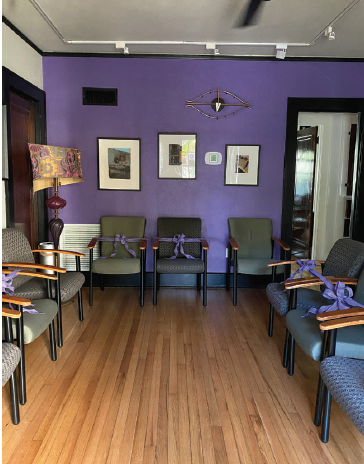
Figure 3. When more than one patient is in the waiting room, they are asked to spread out as far from each other as possible.
These are unprecedented times, and each and every day we have to be ready for changes that make us smarter and our patients and staff members safer. We need to listen to and learn from all our colleagues as we go. The situation is ever-changing, and, unfortunately, no one has all the answers.




